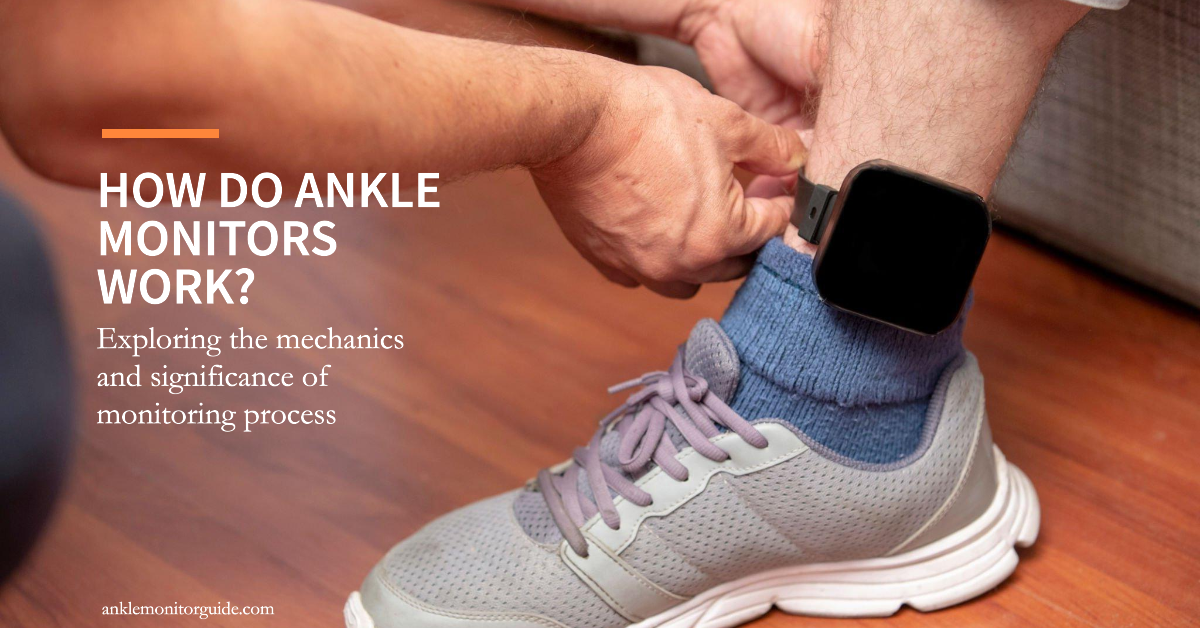Ankle monitors, also known as ankle bracelets or electronic monitoring devices, play a crucial role in the criminal justice system. These electronic sentinels have taken center stage in law enforcement strategies, shaping a new dimension of monitoring.
In the modern world of criminal justice, ankle monitors have emerged as a groundbreaking tool that seamlessly integrates technology and supervision to monitor individuals’ movements and adherence to legal mandates. But have you ever wondered how these devices work? Let’s delve deep into how ankle monitors work, uncovering their functionality, components, and the sophisticated technology that powers them.
What Are Ankle Monitors?
Ankle monitors are devices primarily used by law enforcement to track the movements of certain individuals. They are often used for offenders who are on probation, parole, or house arrest. The device is attached to the individual’s ankle, and it sends signals indicating the person’s location and movements.
- Use: Primarily used by law enforcement for tracking individuals.
- Restrictions: They cannot be removed by the individual, and going beyond a certain range can trigger an alarm.
- Effectiveness: Highly effective in ensuring individuals adhere to the terms of their release or probation.
The Concept Behind Ankle Monitors
At the heart of the ankle monitor concept lies the idea of remote tracking and surveillance. These electronic devices are designed to be securely fastened around an individual’s ankle, creating a direct link between the wearer and a central monitoring center. The ankle monitor technology allows authorities to keep a watchful eye on individuals while affording them some degree of freedom within defined boundaries.
Electronic Monitoring: The Intricate Dance
Ankle monitors are not just simple devices; they are a blend of advanced technology and purposeful design. Their primary functionality involves the use of electronic signals, GPS positioning, and data transmission. The primary goal is to ensure that individuals subject to monitoring comply with court orders, conditions of parole, or other legal obligations.
Geo-Fencing: Establishing Virtual Boundaries
An integral aspect of ankle monitor operation is the concept of geo-fencing. This involves creating virtual perimeters around specific locations, such as a person’s residence or workplace. The ankle monitor, equipped with GPS capabilities, continually tracks the individual’s movements and sends alerts if they breach the predetermined boundaries.
How Do Ankle Monitors Work?
Ankle monitors operate by utilizing GPS (Global Positioning System) and RF (Radio Frequency) technologies to monitor a person’s whereabouts. These devices transmit location data to monitoring centers, ensuring adherence to specified boundaries and conditions
- GPS Technology
Global Positioning System (GPS) technology is a cornerstone of ankle monitor functionality. Through a network of satellites orbiting Earth, ankle monitors are able to pinpoint their exact location. This real-time data is transmitted to the monitoring center, providing authorities with accurate insights into the individual’s movements.
- Radio Frequency Technology
RF ankle monitors, on the other hand, work a bit differently. They communicate with a receiver that’s installed in the individual’s home. If the individual moves outside a certain range, the receiver sends an alert to the authorities. This technology ensures monitoring even in locations where GPS signals might be weaker or obstructed.
Features of Ankle Monitors
Ankle monitors come equipped with various features that enhance the effectiveness of how ankle monitors work. Here are some of the additional features of ankle monitors:
- Tamper Detection: To maintain the integrity of the monitoring process, ankle monitors come equipped with tamper detection mechanisms. If someone tries to remove or tamper with the device, it sends an alert to the monitoring center.
- Exclusion Zones: Authorities can set up specific areas, known as exclusion zones, where the individual is not allowed to go. If the individual enters these zones, the device sends an alert.
- Inclusion Zones: Similarly, there are areas where the individual must remain during specific times. These are called inclusion zones.
- Battery Life: Most ankle monitors must be charged daily. If the battery level gets too low, an alert is sent to the authorities.
Restrictions and Limitations
While ankle monitors are effective tools for law enforcement, they come with certain restrictions and limitations:
- Limited Range: For RF ankle monitors, the individual cannot go beyond a certain range from the receiver installed in their home.
- Charging Requirement: The individual must ensure that the device is charged daily to prevent it from sending low-battery alerts.
- Physical Discomfort: Some individuals find the device uncomfortable or stigmatizing.
The Role of Ankle Monitors in Modern Justice
Ankle monitors provide a valuable tool for law enforcement to monitor individuals under their supervision. By leveraging technology, they offer a cost-effective and practical solution for ensuring compliance with legal restrictions. However, they must be used in conjunction with other rehabilitation and behavioral change programs to be truly effective.
In this intricate dance of technology and human experience, ankle monitors represent a step toward reimagining criminal justice in a digital age. Through the convergence of GPS and RF technology, these unassuming devices are shaping a future where accountability and personal growth walk hand in hand. As we navigate the complexities of how ankle monitor work, we gain a clearer understanding of how technology is revolutionizing the pursuit of justice while striving for a more balanced, informed society.
Remember, while the technology behind ankle monitors is fascinating, their ultimate goal is to aid in the rehabilitation process and help individuals reintegrate into society successfully.







